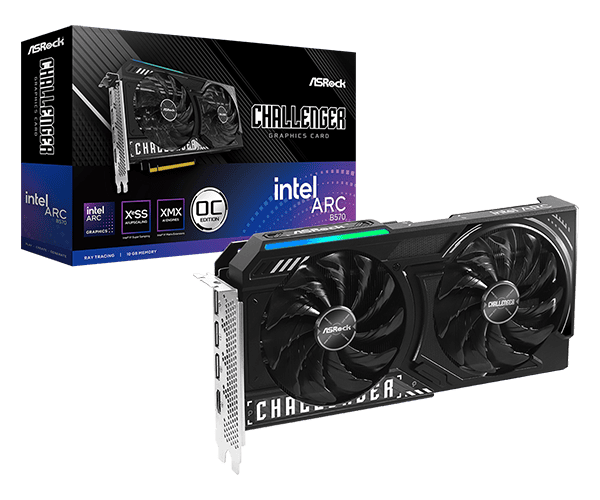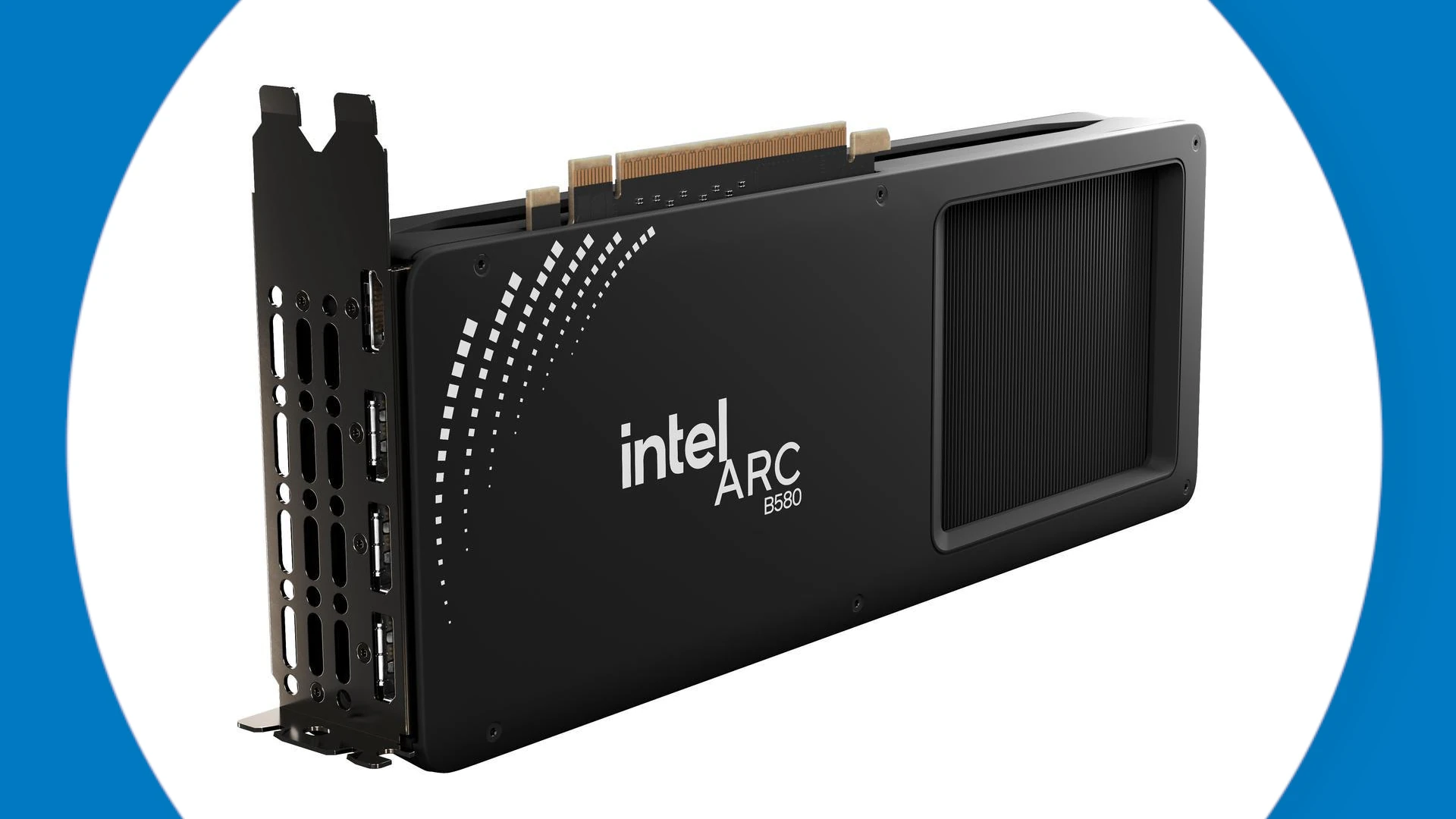AMD is expected to release its Radeon RX 9070 XT and RX 9070 graphics cards at prices of $599 and $499, respectively. This means Intel is the only company focusing on budget GPUs this generation – with the B580 priced at $249 and the B570 priced at a much more modest $219. Intel’s entry into the GPU market with its Arc series has drawn a lot of interest from gamers looking for affordable options, and the second generation (Battlemage) has really carved a niche out for itself.
Intel’s Arc graphics cards might become a strong choice for budget gaming. These cards show good performance and are gaining attention in the market. Intel aims to build a good reputation with regular driver updates and a focus on value. As gamers make their buying decisions, Intel’s efforts to offer better value may change how budget gamers think about their setups.
With ongoing improvements and good pricing, Intel Arc could become a popular option for budget-conscious gamers. We will need to watch this development closely in the coming months.

Affordable Gaming with Intel Arc
Intel Arc: A New Player in the GPU Arena
Intel has entered the dedicated graphics card market with its Arc series, aiming to provide budget-friendly options for gamers. This move disrupts a market long dominated by AMD and NVIDIA. Intel’s strategy focuses on delivering good performance at lower price points, making PC gaming more accessible.
Arc Card Performance and Pricing
Intel is making waves in the budget gaming scene with cards like the Arc B570 and B580. These cards often trade blows with older, more expensive cards from AMD and NVIDIA in benchmarks, making them a strong value proposition.
Here’s a look at the Intel Arc B-series cards and their typical performance targets:
| Card | Target Resolution | Typical Performance | Approximate Price (USD) |
|---|---|---|---|
| Arc B580 | 1080p, 4K | Medium-High settings, targeting 60+ FPS in many titles | $249 |
| Arc B570 | 1080p | Medium-High settings, targeting 60+ FPS in many titles | $219 |
These prices can change based on sales and retailer availability.
Advantages of Intel Arc for Budget Gamers
- Price: Intel Arc cards often come at lower prices than comparable offerings from AMD and NVIDIA. This is a big advantage for gamers on a tight budget.
- New Technology: Arc cards support newer technologies like ray tracing and XeSS (Intel’s upscaling technology). These provide improved visuals and performance in supported games.
- Driver Improvements: Intel has been actively improving its drivers. This has led to significant performance gains in many games since the initial launch of the Arc series.
Challenges and Considerations
- Driver Maturity: While drivers have improved, some games may still experience issues or sub-optimal performance on Arc cards. This is more common in older titles or those that are not well optimized.
- Availability: Availability of Arc cards can vary by region. This can make it difficult for some people to purchase them.
- Brand Recognition: Intel is a newcomer to the dedicated GPU market. Some gamers may be hesitant to switch from more established brands.
Who Should Consider Intel Arc?
Intel Arc cards are a good choice for gamers looking for the best value in the budget to mid-range segment. If you primarily play games at 1080p and are looking for a cost-effective upgrade, an Arc card could be a great fit. If you need top-tier performance for 4K gaming or professional workloads, you might look at higher-end offerings from AMD or NVIDIA.
Alternative Budget Gaming Options
While Intel Arc is making a strong push, there are other options to consider for budget gaming:
- Used Graphics Cards: Buying a used card from a previous generation can often provide excellent performance at a low price. However, be sure to buy from a reputable seller and check the card’s condition.
- Integrated Graphics: Modern CPUs with integrated graphics can handle some light gaming at lower settings. This is a good option for very casual gamers or those on an extremely tight budget.
How Intel’s Move Impacts the Market
Intel’s entry into the GPU market has increased competition, which is good for consumers. AMD and NVIDIA may need to adjust their pricing strategies to remain competitive in the budget segment. This competition can drive innovation and lead to better products at more affordable prices for everyone.
Considerations for Upgrading Your System
If you’re thinking about upgrading your system with an Intel Arc card, there are a few things to keep in mind. First, make sure your power supply has enough wattage to support the new card. Second, ensure your CPU isn’t a bottleneck. A very old or low-power CPU can limit the performance of even a budget graphics card. Finally, check that your motherboard has a compatible PCIe slot. Most modern motherboards do, but it’s always good to be sure.
The PC gaming hardware landscape is constantly changing, with new products and technologies appearing regularly. For gamers on a budget, this continuous evolution is especially important, as it often means better performance and lower prices. Intel’s focus on the budget market with their Arc GPUs is a significant development, offering a viable third option alongside the established players, AMD and NVIDIA. While challenges remain, especially regarding driver support and game optimization, Intel’s commitment to improving its software and offering competitive pricing makes Arc a compelling choice for those seeking to build or upgrade a gaming rig without breaking the bank. By carefully considering your needs, budget, and the available options, you can put together a powerful gaming PC that delivers a great experience without emptying your wallet.
The Rise of Integrated Graphics for Light Gaming
Beyond dedicated graphics cards like Intel Arc, integrated graphics processing units (iGPUs) built into CPUs have become surprisingly capable for light gaming. Modern iGPUs from Intel (like those in their 11th Gen and newer CPUs) and AMD (like their Ryzen APUs) can handle many less demanding games at 720p or even 1080p with lower settings. This makes them an excellent option for casual gamers who don’t need high frame rates or ultra-high resolutions. Games like Minecraft, League of Legends, and older titles often run smoothly on integrated graphics. This eliminates the need for a dedicated graphics card, lowering the overall cost of a gaming PC. While not suitable for the latest AAA titles at high settings, integrated graphics provide a cost-effective entry point into PC gaming.
Intel Arc A-series: A Retrospective and Look Ahead
The introduction of Intel Arc graphics cards marked a significant shift in the GPU landscape. While initially met with a mix of excitement and skepticism, the A-series ultimately carved a niche for itself, particularly among budget-conscious gamers. Now that Intel has launched its next-generation Battlemage GPUs, with the B580 and B570 leading the charge, it’s an opportune time to revisit the A-series, examine its legacy, and see how it paved the way for Intel’s future in discrete graphics.
Competitive Performance, Then and Now
The Arc A770, the flagship of the A-series, offered respectable 1080p gaming performance at a compelling price point. While it might not have dethroned the reigning champions from NVIDIA and AMD in raw power, it presented a viable alternative for those seeking a balance of performance and affordability.
Looking back, the A770’s significance lies not just in its frames-per-second, but in its potential. It showcased Intel’s commitment to innovation with features like DirectX 12 Ultimate support and XeSS upscaling technology. These laid the groundwork for the advancements we see in the newer Battlemage GPUs. For example, the B580, with its 16 Xe-Cores and 12GB of GDDR6 memory, delivers performance that surpasses the A770 and even rivals NVIDIA’s RTX 4060 in many games. The B570, while slightly less powerful, offers a compelling price-to-performance ratio, making it a strong contender in the entry-level segment.
Affordability Remains Key
The A-series made a strong case for budget-minded gamers. Cards like the A380 often undercut the competition, making PC gaming more accessible. This strategy continues with the Battlemage series. The B580 launched with an MSRP of $249, significantly undercutting the RTX 4060 while offering comparable performance. The B570 is positioned even lower, making it an attractive option for those on a tight budget.
The A-series demonstrated that competitive pricing can disrupt the GPU market. As the market continues to evolve, it will be interesting to see how Intel leverages pricing with the B580 and B570 to gain further traction.
Drivers: A Journey of Improvement
Driver support was arguably the biggest challenge for the A-series. While initial releases had some rough edges, Intel showed dedication to improvement through frequent updates. This commitment has carried over to the Battlemage series, where driver stability and optimization are reportedly much improved from the start.
The A-series taught Intel valuable lessons about the importance of robust driver support. This experience has undoubtedly contributed to the smoother launch and improved user experience of the Battlemage GPUs. Early reports suggest that the B580 and B570 are delivering consistent performance with fewer driver-related issues.
The Legacy of the A-series
The Intel Arc A-series might not have been a knockout punch, but it was a crucial first step for Intel in the discrete GPU market. It proved that Intel could deliver competitive performance at attractive prices, and it laid the foundation for future generations of Arc GPUs like the B580 and B570.
With the arrival of Battlemage, the A-series now serves as a reminder of how far Intel has come in a short time. It’s a testament to their commitment to innovation and a sign of their growing ambition in the GPU space.
Looking Ahead
The Battlemage GPUs, specifically the B580 and B570, represent a significant step forward for Intel. By learning from the A-series, they have refined their approach to performance, pricing, and driver support. It’s an exciting time for PC gamers, as increased competition from Intel promises to drive innovation and value across the entire market.







